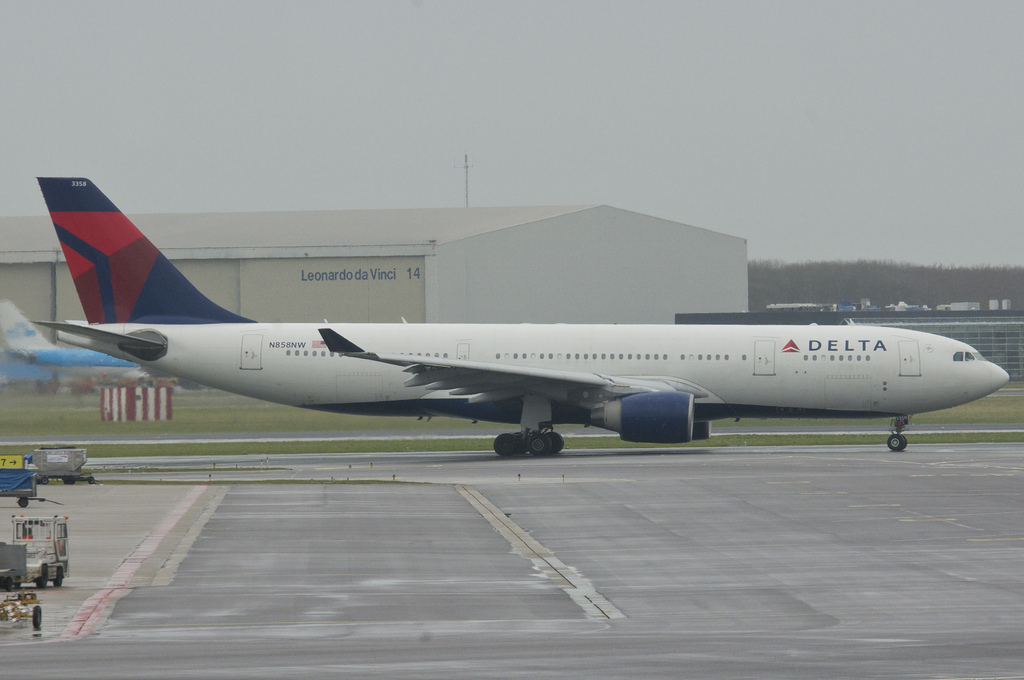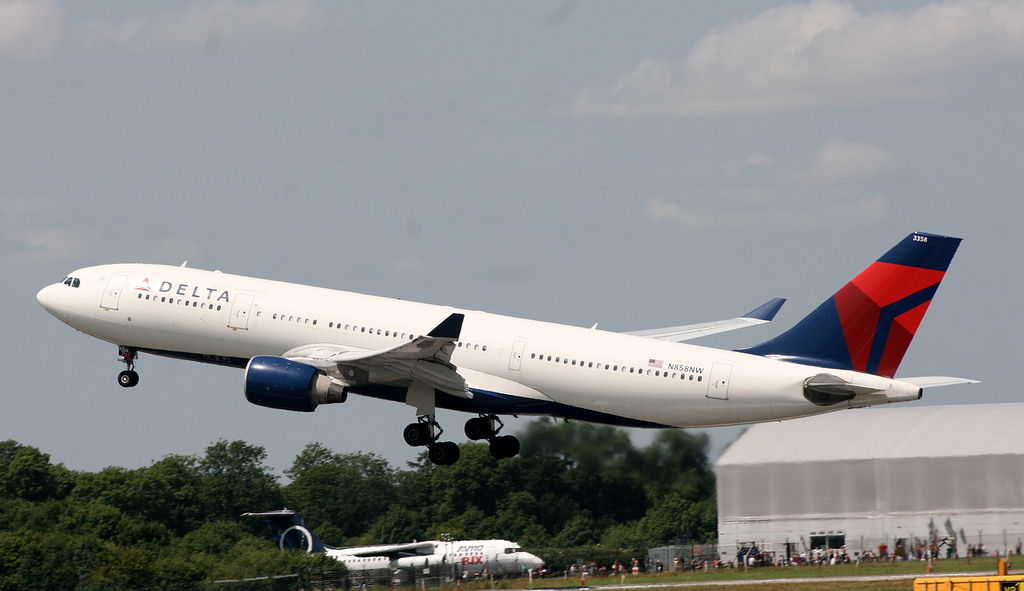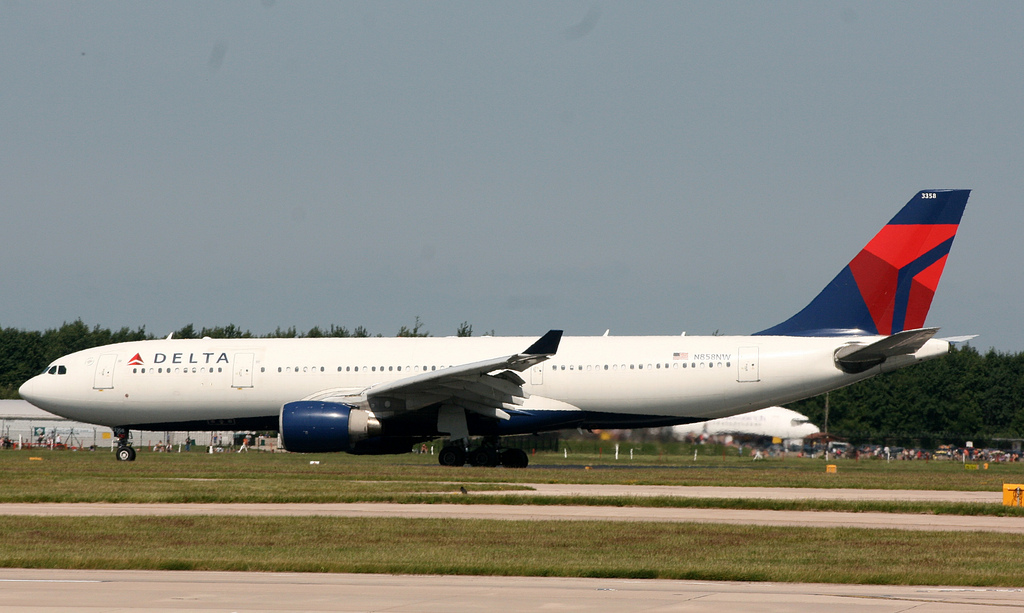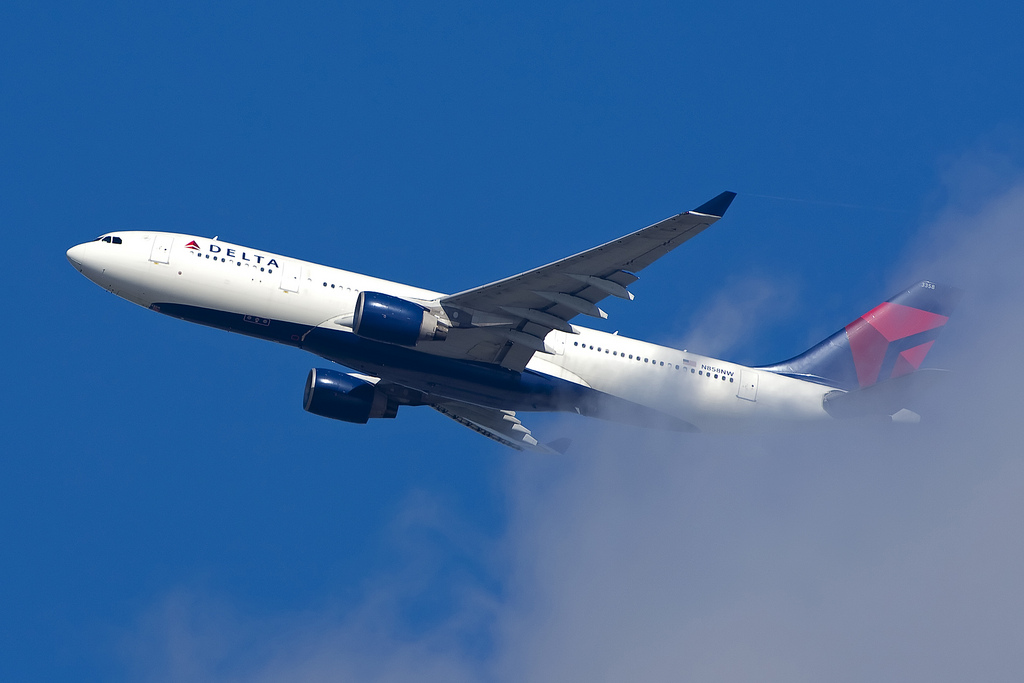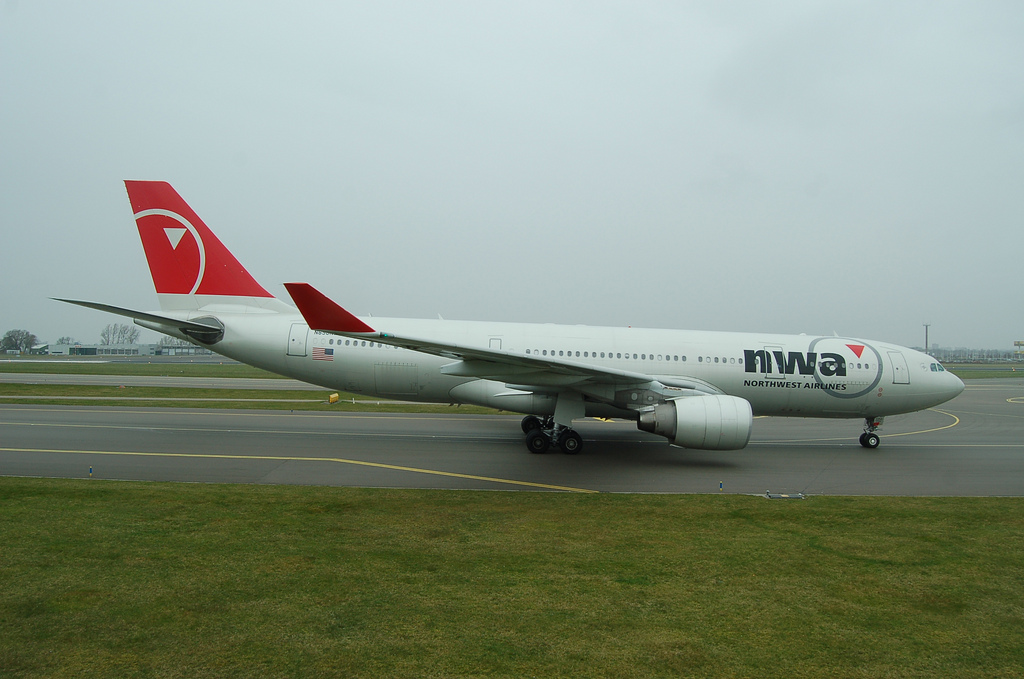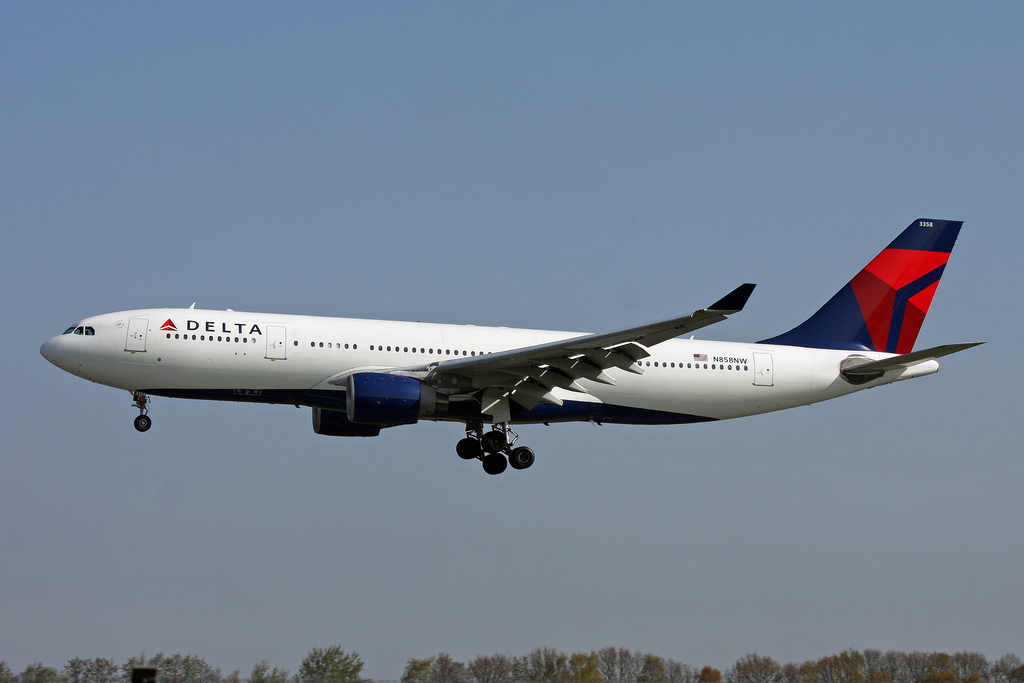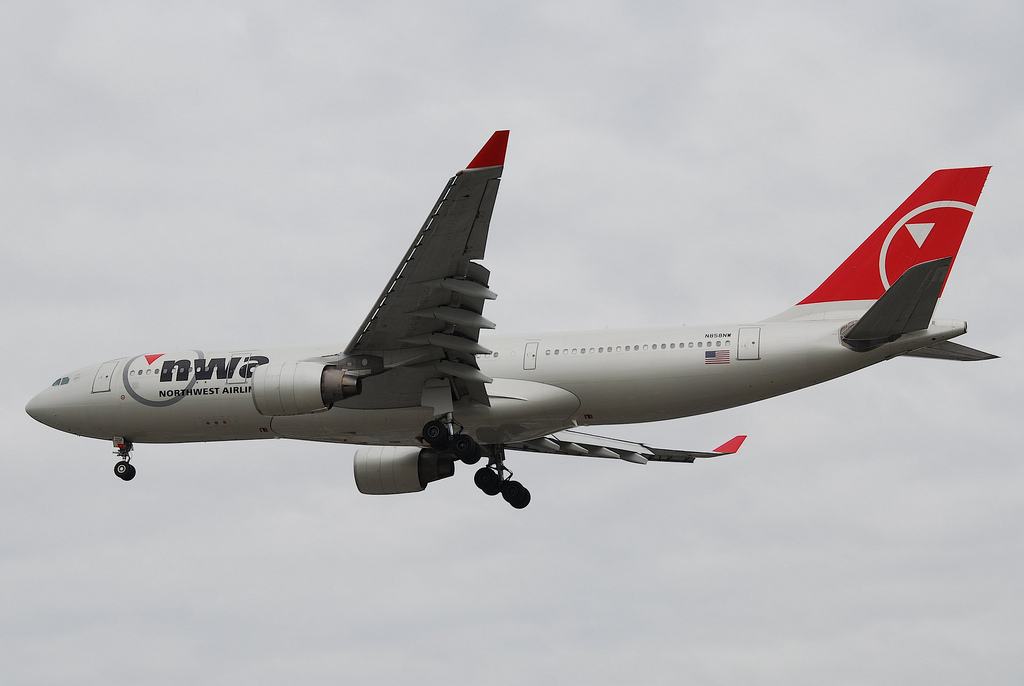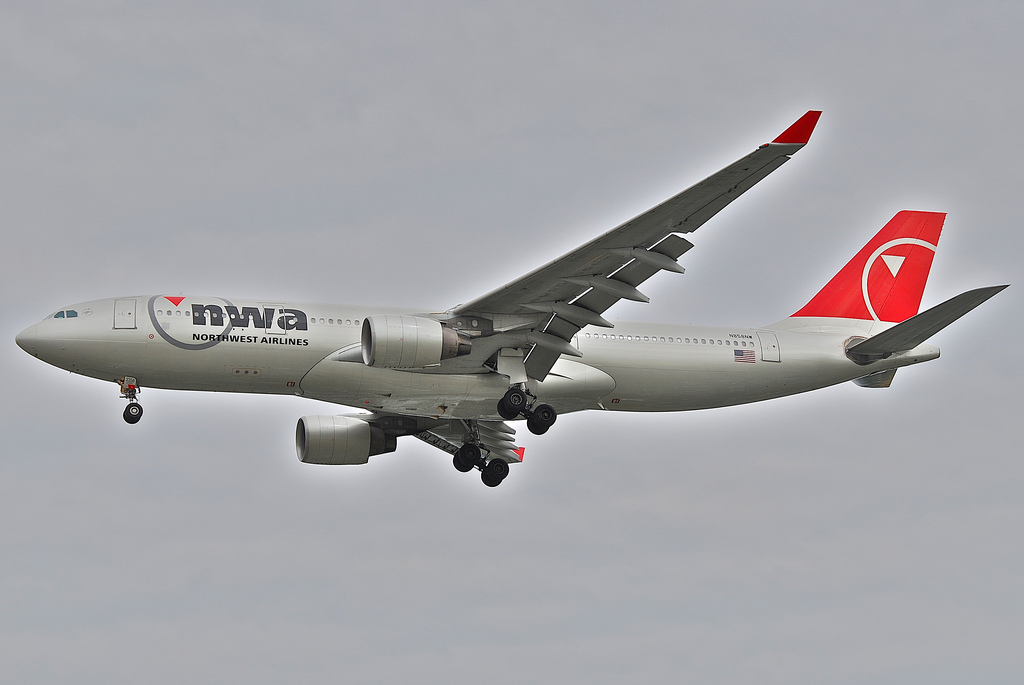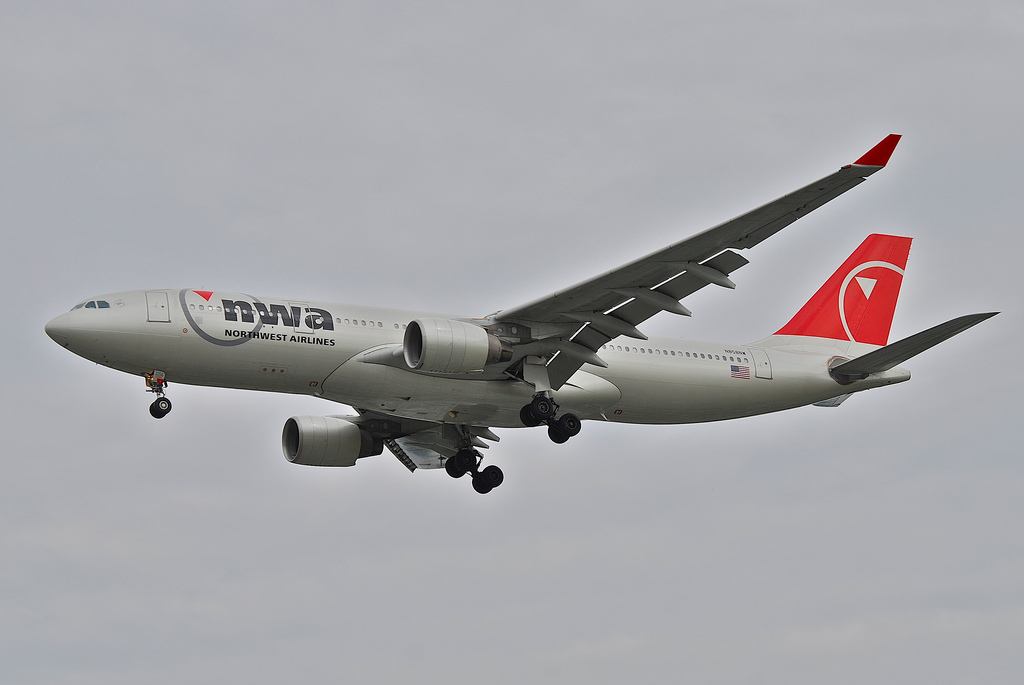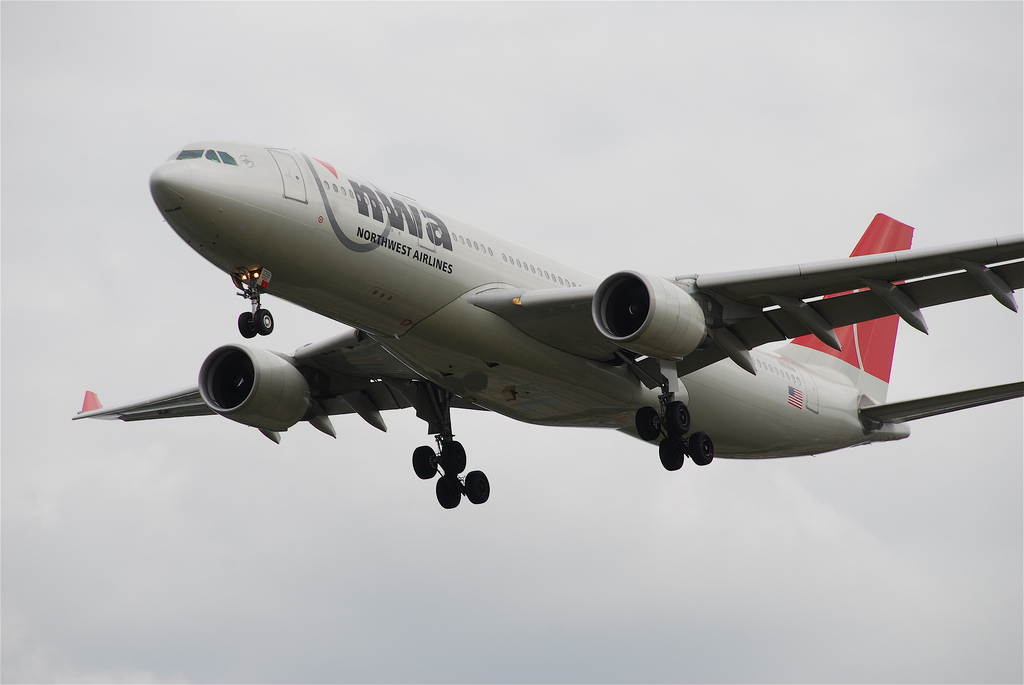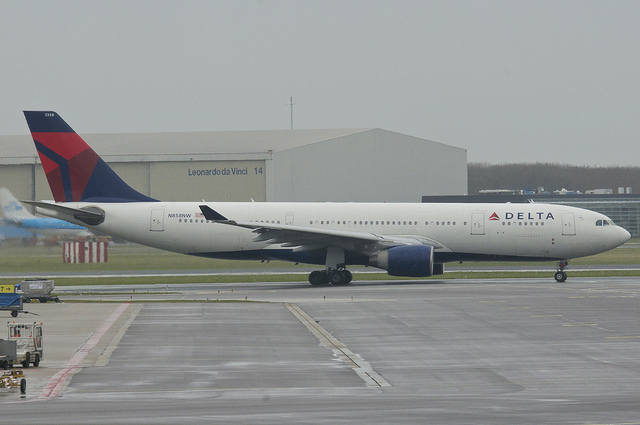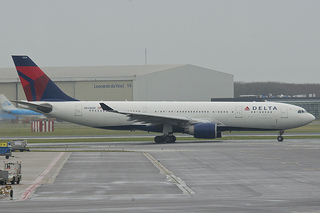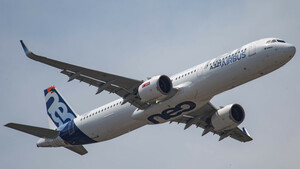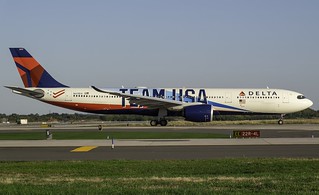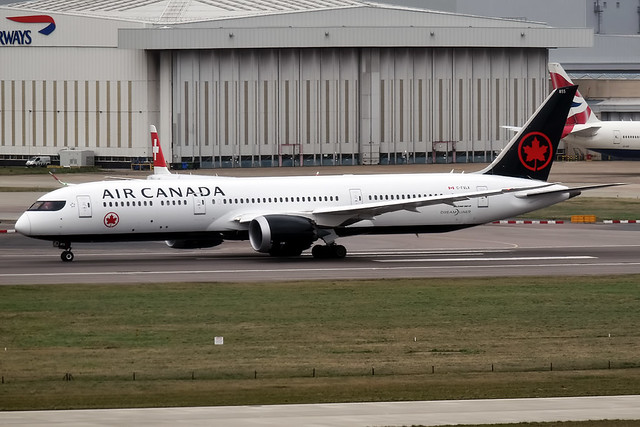Delta A332 at Lagos on Feb 13th 2018, engine fire
Last Update: April 25, 2019 / 18:18:10 GMT/Zulu time
Incident Facts
Date of incident
Feb 13, 2018
Classification
Accident
Cause
Engine fire
Airline
Delta Airlines
Flight number
DL-55
Departure
Lagos, Nigeria
Destination
Atlanta, United States
Aircraft Registration
N858NW
Aircraft Type
Airbus A330-200
ICAO Type Designator
A332
The airline reported the aircraft experienced an issue with one of the two engines. 5 passengers received minor injuries in the evacuation. The passengers were taken to hotels and were rebooked onto the next day's flight.
Nigeria's CAA reported the aircraft made an air return after the left hand engine caught fire. An investigation has been opened.
The FAA reported the aircraft, a Boeing 777-200, returned to and landed at Lagos after an engine fire. The aircraft was evacuated, there was one unknown injury to a flight crew and one minor injury to a passenger.
On Mar 1st 2018 Nigeria's Accident Investigation Board (NAIB) released their preliminary report stating, that the aircraft was climbing through 1700 feet MSL when the #1 engine fire warning activated. The crew declared emergency , shut the engine down, discharged both fire bottles and made an immediate air return landing overweight and stopping on runway 18R. Emergency services observed a fire in the #1 engine and extinguished the fire. One passenger received serious, 11 passengers minor injuries in the evacuation.
A post event inspection revealed evidence of a fire, a number of charred wires were found. An examination of the fuel revealed no contamination or other anomaly. A borescopic inspection of the engine revealed some corrosion in turbine and combustion chamber. The investigation is continuing to conduct an engine examination, checks of fuel manifold, engine oil and hydraulic lines, inspection of fuel manifolds for cracks and fuel nozzle braze joints for leaks.
On Apr 25th 2019 the NAIB released their final report concluding the probable cause of the occurrence was:
An overtemperature condition and localized fire within the No. 1 engine cowling triggered a fire warning. The overtemperature and fire were caused by the ignition of fuel from a hairline crack on the fuel manifold supplying fuel nozzle 1.
Contributory factor
The fuel manifold cracking can be attributed to high vibratory stresses due to coupling of an acoustic combustor mode and a fuel manifold structural mode.
The NAIB analysed: "Following the discharge of the fire bottle, the No. 1 engine fire warning indication remained illuminated. Hence, the flight crew also discharged the second fire bottle. After the second fire bottle was discharged, the fire warning continued briefly, but cleared during the approach for landing. It can be deduced that the overtemperature condition which likely had caused the activation of the fire warning had been contained or cooled, possibly by the fire extinguishing agent."
The aircraft returned to Lagos for an overweight landing. The NAIB analysed: "The aircraft landed safely on the runway and was met by Airport Rescue and Fire Fighting Services (ARFFS). The ARFFS personnel communicated via the ATC the information to the flight crew that there was an active fire in the No. 1 engine, and advised the flight crew that the passengers be evacuated. ATC confirmed there was fire at the tail end of the engine No.1 exhaust pipe, the Captain then ordered evacuation. The passengers were evacuated from the right side of the aircraft."
The NAIB analysed with respect to the fuel leak: "The engine teardown report showed that there was a leak from a hairline crack on the fuel manifold tube that supplied fuel nozzle 1, when a testing pressure of approximately 65 psi was applied." and argued that at full thrust the engines required increased fuel supply, the fuel pressure therefore was logically high, the leak thus would result in a high velocity fuel spray. The NAIB concluded analysis:
The metallurgical examination of the fuel manifold and the bracket showed that the fracture in the fuel manifold progressed in high cycle fatigue from an origin at the toe of a tack weld.
The engine teardown report showed that during removal of fuel nozzle 1, the intermediate cooling duct support bracket bolted to the fuel nozzle 1 pad was found fractured on the left side (See Figure 6 below). The fuel manifold cracking is due to a structural mode of the fuel manifold being excited by a combustor acoustic tone.
...
It was evident from the melted plastic sheathing of the fire detector loop/wire harness and the scorch marks on various surfaces and components, that the fire warning had been triggered by fire within the engine nacelle and not just an overtemperature condition.
The NAIB analysed the actions by the fire fighters:
Personnel of the Airport Rescue and Fire Fighting Services reported observing a fire in the left engine when the aircraft landed. The crew, however, reported that the fire warning indication was extinguished on approach for landing. The FDR flight data corroborated the report of the crew and showed that the overtemperature condition that had annunciated the warning had been resolved prior to landing. The ARFFS personnel attempted to extinguish the fire by directing the fire extinguisher into the aircraft exhaust pipe, as was obvious on visual inspection of the engine when the investigators arrived at the scene. Although the ARFFS personnel reported seeing flames in the left engine, the fire damage to the No. 1 engine was localized within the engine cowling. It was therefore difficult to corroborate the observations of the ARFFS personnel.
Since the incident occurred at night and the aircraft stopped on the runway, it is possible that the exhaust glow of the engine No. 1 could have been taken for a fire.
In addition, since the aircraft landed in excess of its maximum landing weight, the braking force required to stop the aircraft would be sufficient to cause overheating of the wheels resulting in the red-hot glow reported by the ARFFS.
Aircraft Registration Data
Incident Facts
Date of incident
Feb 13, 2018
Classification
Accident
Cause
Engine fire
Airline
Delta Airlines
Flight number
DL-55
Departure
Lagos, Nigeria
Destination
Atlanta, United States
Aircraft Registration
N858NW
Aircraft Type
Airbus A330-200
ICAO Type Designator
A332
This article is published under license from Avherald.com. © of text by Avherald.com.
Article source
You can read 2 more free articles without a subscription.
Subscribe now and continue reading without any limits!
Read unlimited articles and receive our daily update briefing. Gain better insights into what is happening in commercial aviation safety.
Send tip
Support AeroInside by sending a small tip amount.
Related articles
Delta A332 at Frankfurt on Jul 22nd 2022, rejected takeoff due to bird strike
A Delta Airlines Airbus A330-200, registration N858NW performing flight DL-87 from Frankfurt/Main (Germany) to Detroit,MI (USA), was accelerating for…
Delta A332 near Tokyo on Oct 19th 2017, engine shut down in flight
A Delta Airlines Airbus A330-200, registration N858NW performing flight DL-38 from Hong Kong (China) to Seattle,WA (USA) with 230 people on board,…
Delta A332 at Seattle on Oct 8th 2015, bird strike
A Delta Airlines Airbus A330-200, registration N858NW performing flight DL-281 from Seattle,WA (USA) to Hong Kong (China), departed Seattle's runway…
Delta B712 enroute on Jan 10th 2026, lightning strike
A Delta Airlines Boeing 717-200, registration N919AT performing flight DL-2216 from Wichita,KS to Atlanta,GA (USA), was enroute at FL290 when the…
Delta A321 near Kansas City on Jan 3rd 2026, engine shut down in flight
A Delta Airlines Airbus A321-200, registration N349DX performing flight DL-2883 from Denver,CO to Detroit,MI (USA) with 169 passengers and 6 crew,…
Delta B739 near Atlanta on Dec 30th 2025, odour in cabin
A Delta Airlines Boeing 737-900, registration N801DZ performing flight DL-2150 from Miami,FL to Minneapolis,MN (USA) with 111 passengers and 6 crew,…
Delta A21N near Tampa on Dec 27th 2025, unusual odour on board
A Delta Airlines Airbus A321-200N, registration N503DZ performing flight DL-504 from Orlando,FL to Los Angeles,CA (USA) with 194 passengers and 6…
Delta A339 near Detroit on Nov 30th 2025, engine shut down in flight
A Delta Airlines Airbus A330-900, registration N411DX performing flight DL-162 from Minneapolis,MN (USA) to Amsterdam (Netherlands), was enroute at…
Newest articles
EAT Leipzig A306 at Brussels on Nov 26th 2020, rejected takeoff above V1 due to difficulties becoming airborne
An EAT Leipzig Airbus A300-600 freighter on behalf of DHL, registration D-AEAI performing flight QY-841 from Brussels (Belgium) to Vitoria,SP…
Canada B789 at Auckland on Jan 13th 2026, unusual odour
An Air Canada Boeing 787-9, registration C-FVLX performing flight AC-40 from Auckland (New Zealand) to Vancouver,BC (Canada) with 269 passengers and…
Subscribe today
Are you researching aviation incidents? Get access to AeroInside Insights, unlimited read access and receive the daily newsletter.
Pick your plan and subscribePartner

ELITE Simulation Solutions is a leading global provider of Flight Simulation Training Devices, IFR training software as well as flight controls and related services. Find out more.
SafetyScan Pro provides streamlined access to thousands of aviation accident reports. Tailored for your safety management efforts. Book your demo today
AeroInside Blog
Popular aircraft
Airbus A320Boeing 737-800
Boeing 737-800 MAX
Popular airlines
American AirlinesUnited
Delta
Air Canada
Lufthansa
British Airways
